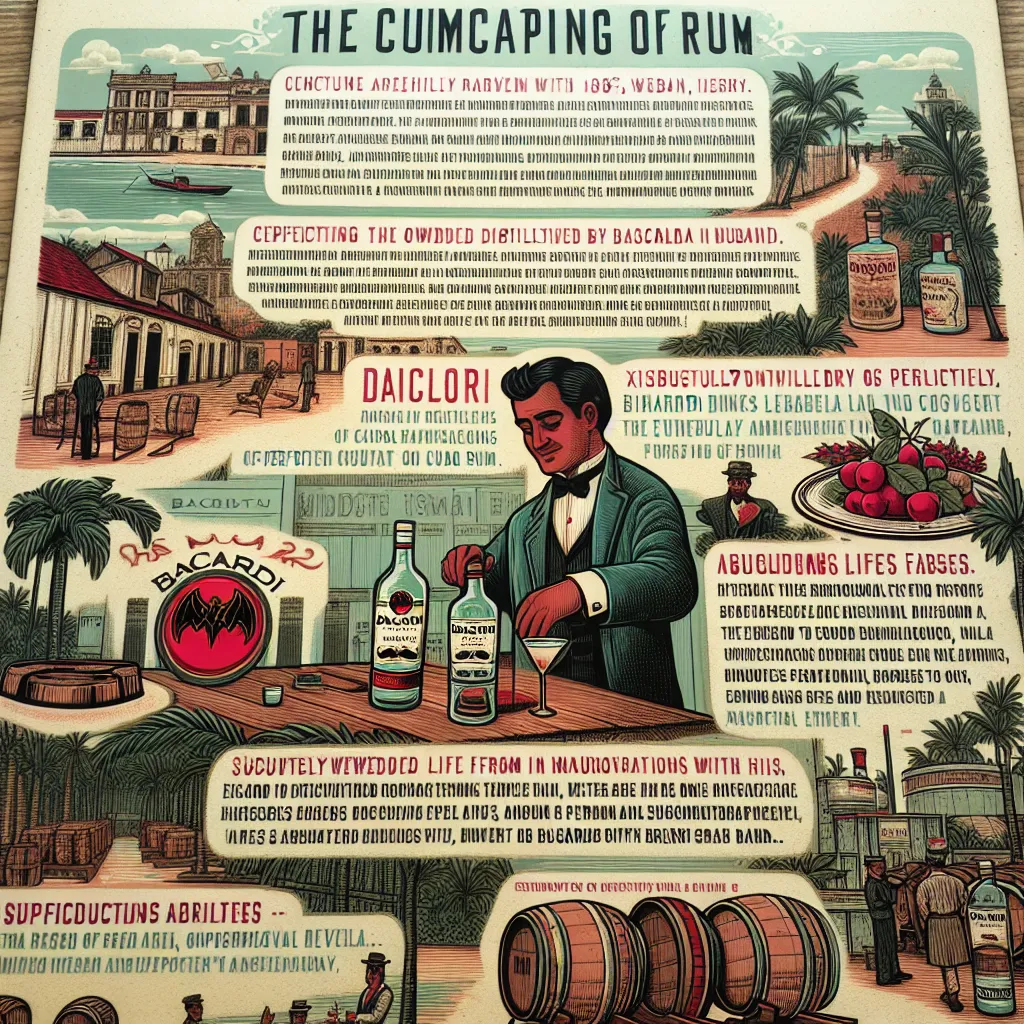If you’re into rum, you’re going to love diving into the rich history of Bacardi, one of the world’s top rum distilleries. Our journey starts in the early 19th century in Cuba, which was a Spanish colony at the time. Facundo Bacardi, at just 16 years old, left his hometown in Northeastern Spain and headed to Cuba in 1830, motivated by economic struggles.
Facundo settled in Santiago de Cuba and found a job at a distillery owned by John Nunes, one of the city’s first rum producers. The rum back then wasn’t what we know today. It was called aguardiente, a harsh drink made by fermenting a mix of water and molasses. It had a brutal 85% alcohol content and was often used as medicine rather than a drink.
Facundo spent years working on aguardiente but had bigger dreams. In 1843, he married Amalia Moreau, whose family wealth enabled him to buy John Nunes’ distillery in 1862 for $3,500. That was the birth of Bacardi. The distillery came with a colony of fruit bats, a symbol of good fortune in Cuba, which would later represent the Bacardi brand.
With his distillery, Facundo embarked on perfecting rum production. He experimented tirelessly with different strains of yeast, molasses concentrations, and the distillation process until he created a high-quality rum. His final product was light, nearly transparent, and lacked the foul odors of traditional aguardiente.
Bacardi rum quickly became popular, and by 1868, it was widely sold across Cuba. Facundo’s son, Emilio, took over after Facundo’s death in 1886. Emilio not only expanded Bacardi but also used its resources to support Cuban independence, leading to his exile twice. After Cuba’s independence in 1902, Emilio returned, became Santiago’s mayor, and was elected to the Cuban Senate.
Bacardi’s first international bottling facility opened in Barcelona in 1910. The brand’s expansion to the US was hampered by Prohibition in 1919, but Americans still flocked to Cuba for Bacardi. After Prohibition ended, Bacardi sidestepped high import duties by opening a facility in Puerto Rico.
Two iconic cocktails, the Daiquiri and the Cuba Libre, showcased Bacardi’s quality and contributed significantly to its popularity in the US. Yet, the end of the 1950s brought tumultuous times when Fidel Castro’s regime seized Bacardi’s Cuban assets. Forced to relocate, Bacardi set up in the Bahamas and continued to thrive, overcoming significant challenges.
By 1964, Bacardi had sold a million cases of liquor. The 1990s saw the successful launch of Bacardi Breezer and the acquisition of Martini & Rossi for $1.4 billion. Today, Bacardi boasts facilities across Western Europe and North America, staying rooted in the Spanish-speaking world.
A notable rivalry with Havana Club, another prominent rum brand, marked Bacardi’s history post-Cuban Revolution. The Cuban government’s seizure of Havana Club assets led Bacardi to buy the US rights from the exiled Arechabala family. Despite legal battles, Bacardi emerged victorious and continues to sell Havana Club in the US.
Maintaining its private ownership, Bacardi is still run by Facundo’s descendants and boasts over 200 different labels. Given its resilience and ability to adapt, Bacardi seems poised to remain a significant player in the global liquor industry.
Thanks for joining this fascinating journey through Bacardi’s storied past!






